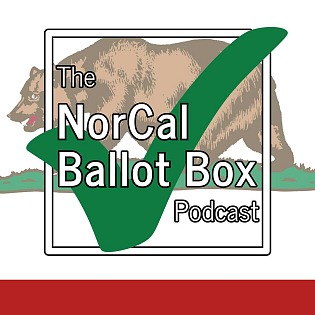 Photo courtesy of KPIX/ CBS Bay Area
Photo courtesy of KPIX/ CBS Bay AreaThe Sonoma County Board of Supervisors on Tuesday unanimously approved the first reading of an ordinance that would limit camping in public spaces during daytime hours.
Board Chair Chris Coursey acknowledged the ordinance could have an effect on people experiencing homelessness.
"We recognize the fundamental right to have a place to sleep if you have nowhere else to go," said Coursey in a statement released by the county. "At the same time, we need to balance the needs of the unhoused with the health and safety concerns that these prolonged, unsanctioned encampments create for unhoused individuals and their impacts on the wider community."
The county said that the ordinance would move it into compliance with recent legal decisions concerning overnight camping "while still providing the county options to discourage permanent housing encampments, prevent garbage buildup and address public health issues."
At root of the legal discussions around laws that dictate where and when an unsheltered person can set up camp or sleep is the 2018 Martin v. Boise case that was decided by the U.S. Court of Appeals for the Ninth Circuit, which essentially said a city cannot criminalize or penalize people for living in certain public spaces if they have nowhere else to go and are not given alternative shelter options.
However, according to the county, Martin v. Boise does allow for certain restrictions on where unsheltered people can inhabit.
The county can dictate certain times that areas can be occupied; in this case, Sonoma County is proposing prohibiting camping on public property between the hours of 7 a.m. to 9 p.m.
"By doing so, this would bring the ordinance in line with Martin v City of Boise by recognizing the fundamental right for unsheltered individuals to sleep, while maintaining the County's ability to prohibit prolonged occupations of public property, large accumulation of items and debris, and the establishment of large encampments," reads the summary report given to supervisors from county counsel.
The county said it can also impose a complete prohibition on camping on or near certain types of properties that are "particularly sensitive," such as inside public buildings or within 25 feet of their entrance, within 50 feet of a residence, within 100 feet of a daycare, playground, school or other licensed childcare facility, within any county park, within any public highway, road or street, or anywhere that might obstruct the free passage of persons, bikes or vehicles.
The restrictions also apply to very high fire severity zones, places within 150 feet of the high water mark of the waters within the state or areas designated as regulatory floodways by the Federal Emergency Management Agency, and within 25 feet of a facility that provides shelter, safe sleeping or safe parking to homeless people.
According to the draft ordinance, those who violate the law would be guilty of a misdemeanor.
"Except where other penalties are specified, each offense may be punished by a fine of not less than one hundred dollars ($100.00) nor more than five hundred dollars ($500.00), or by the imprisonment in the county jail not to exceed sixty (60) days, or by both such fine and imprisonment," reads the ordinance.
County spokesperson Matt Brown said that law enforcement would most likely issue warnings for first time offenders, however.
"The goal is compliance, not punishment," Brown said in an email.
A county-sanctioned encampment was recently set up on the property of the Sonoma County offices after a shelter crisis was declared on Feb. 21.
On March 23, an encampment on the Joe Rodota Trail was cleared and 90 people were offered space at the new county-sponsored encampment. There are currently 70 people living at the new encampment, the county said, and 20 people declined to accept the shelter.
The proposed ordinance now goes back to the board of supervisors on April 18 for a second vote to adopt the regulations.

 Live Radio
Live Radio




